cav | pag [mascagni | leoncavallo]
[10/2012] | [entry, european opera-directing prize]
scenic designer | CHANTAL CALATO
costume designer | IZUMI INABA
lighting designer | GREG HOFMANN
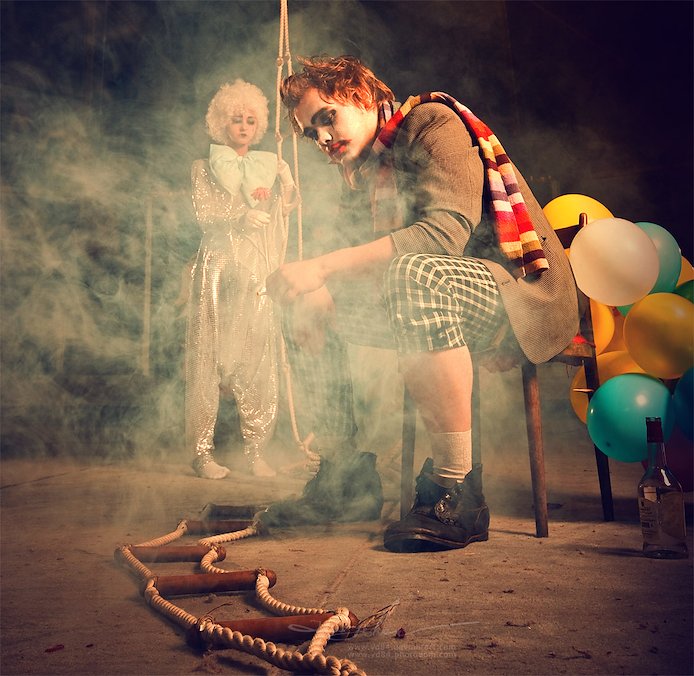
The performing artist has always been intriguing to the audience. Who is this person who smears on stage make-up, squeezes in a costume, and pretends to be someone else, night after night, for an audience? Many people believe that such a free life, one full of make-believe, is enviable. But in fact most performers are miserable and lonely. Performing is a solitary endeavor: you sing and act for hundreds of people, you have another hundred people working for you behind the scenes, and yet you are alone. You try to convince the audience that you are feeling something, so that they too might feel, when in fact you or they may feel nothing of the kind. Your success in finding work is based on auditioning and enduring repeated rejection before getting a job. This raw humanity defines the Verismo opera style and reflects the focus on “naturalism” which other art forms at the end of the 19th century also held.
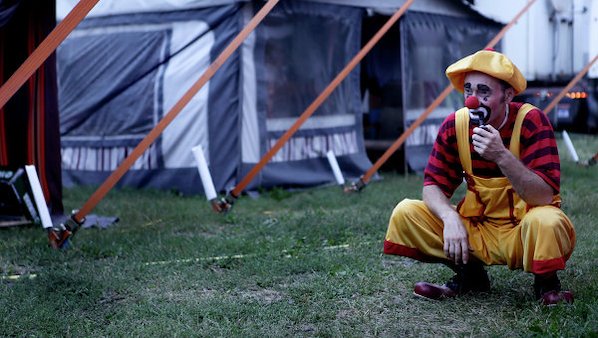
Our production of these two operas aims to demystify and disenchant the life of the performer, to show its miserableness and loneliness. We use the clown as a symbol to represent the performer, and Canio as the central protagonist. The emotional experience of the clown and the performer are similar. The clown must laugh, and make people laugh, when he himself is miserable, just as the performer must create a character who feels what the performer doesn’t necessarily feel. Each struggles to be heard, fights to be taken seriously by the audience, despite the audience’s refusal to do. Both often fail at what they hope to achieve, whether it’s blowing up a balloon or getting the part. This repeated failure is what makes the clown so funny, and the life of the performer so insufferable.

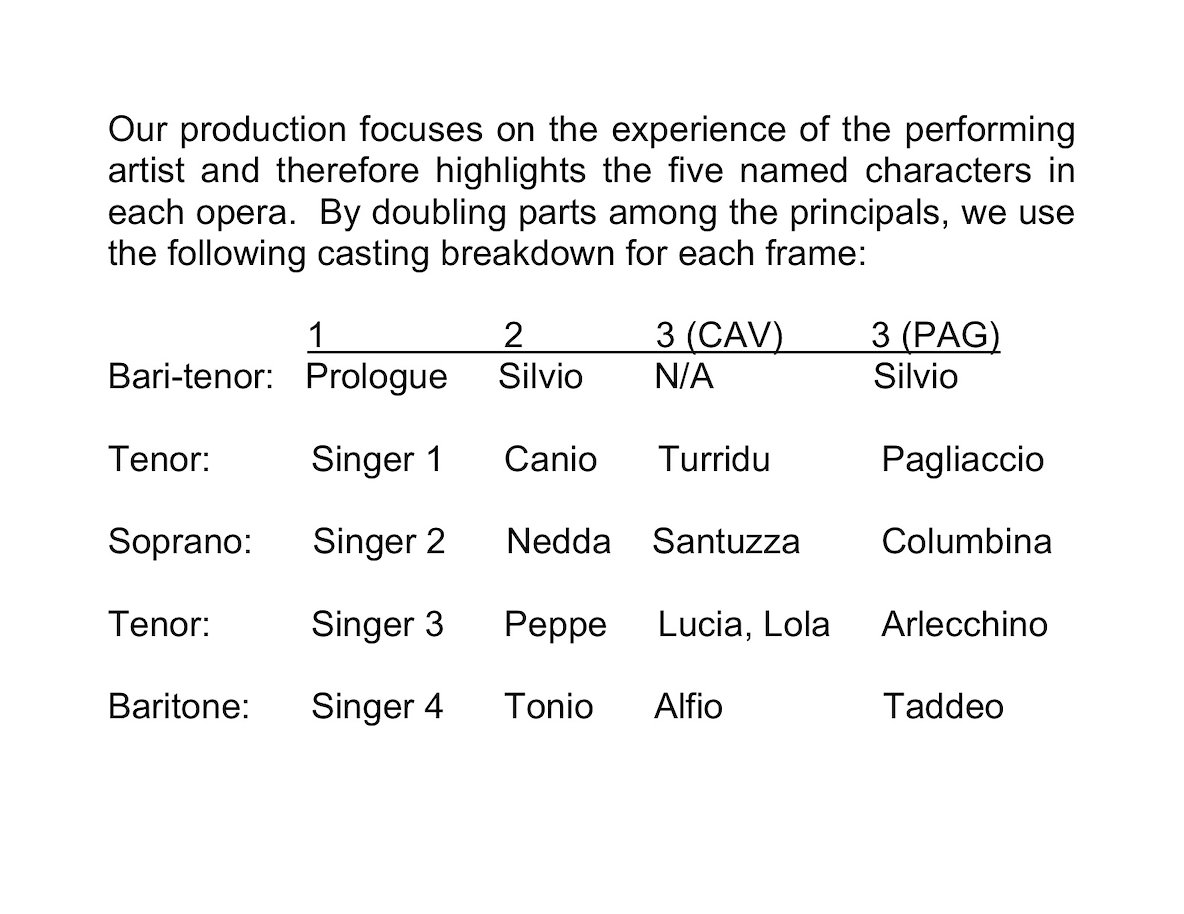
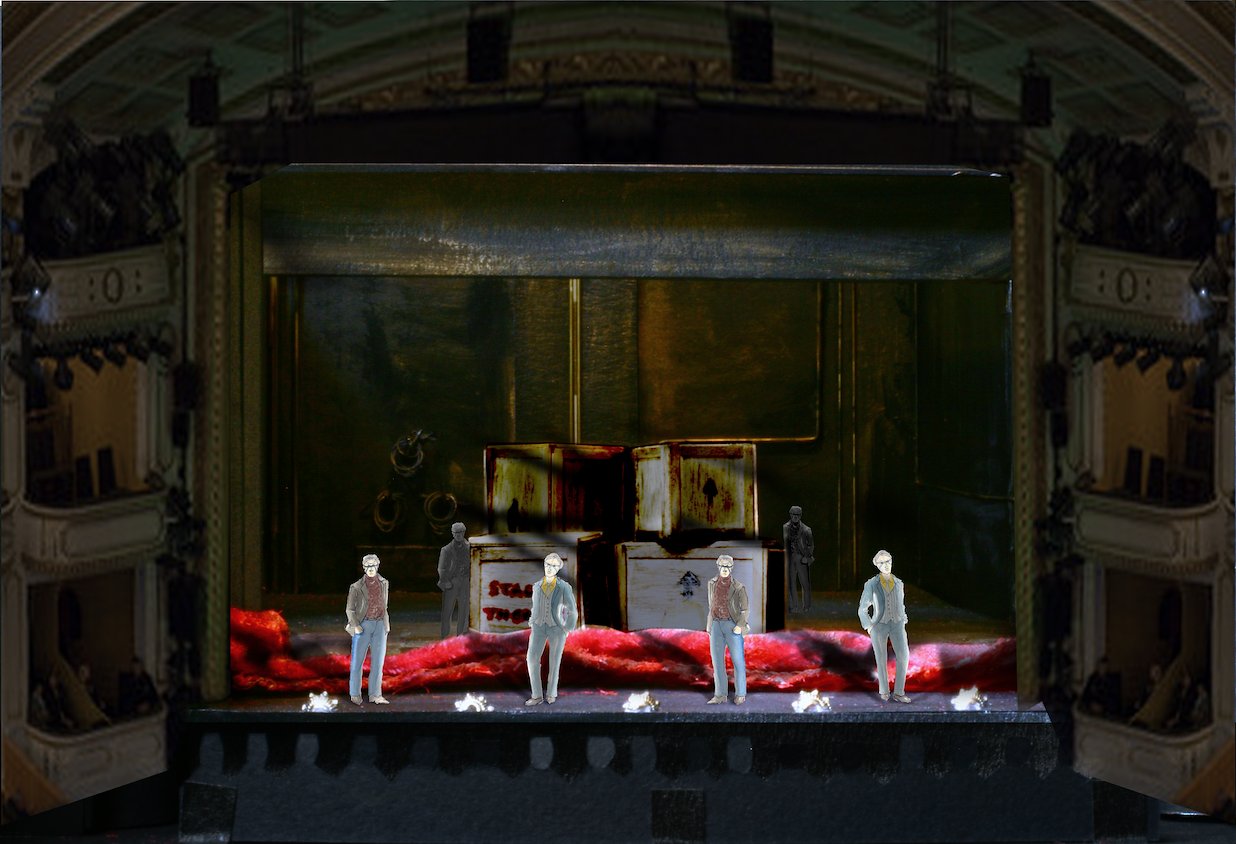
Transition (from Frame 1 to Frame 2): The Prologue sings directly to the audience. The main curtain drops behind the five Singers to highlight the artifice of the Prologue. At the end of the Prologue, the main curtain drops to the floor, revealing a group of stagehands (played by chorus members.) They begin to build the dressing room of the travelling clown troupe. The main curtain becomes the floor of the dressing room. The Singers change costume into those of the Actors: Canio, Nedda, Peppe and Tonio.

The Prologue | Frame 1

Canio | Frame 2
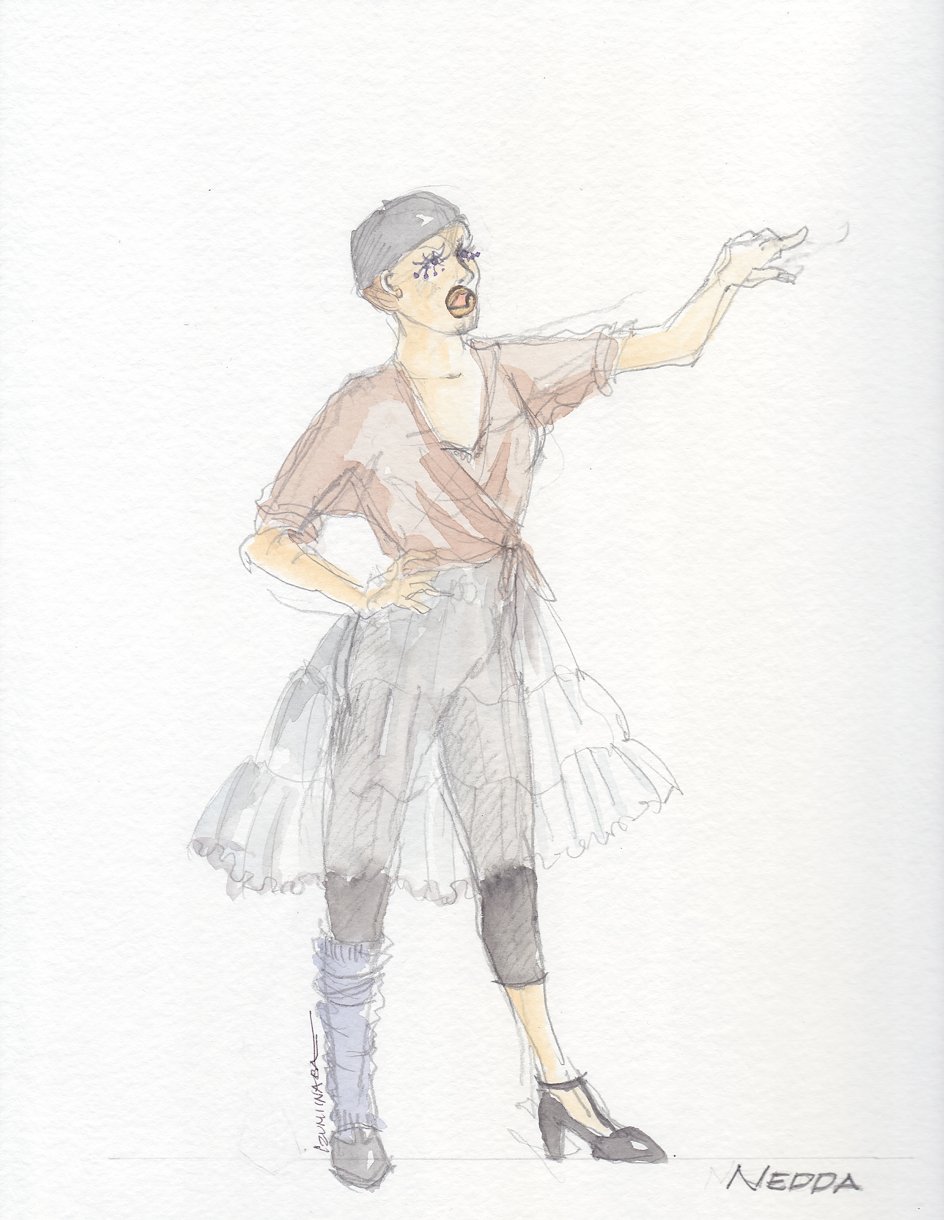
Nedda | Frame 2
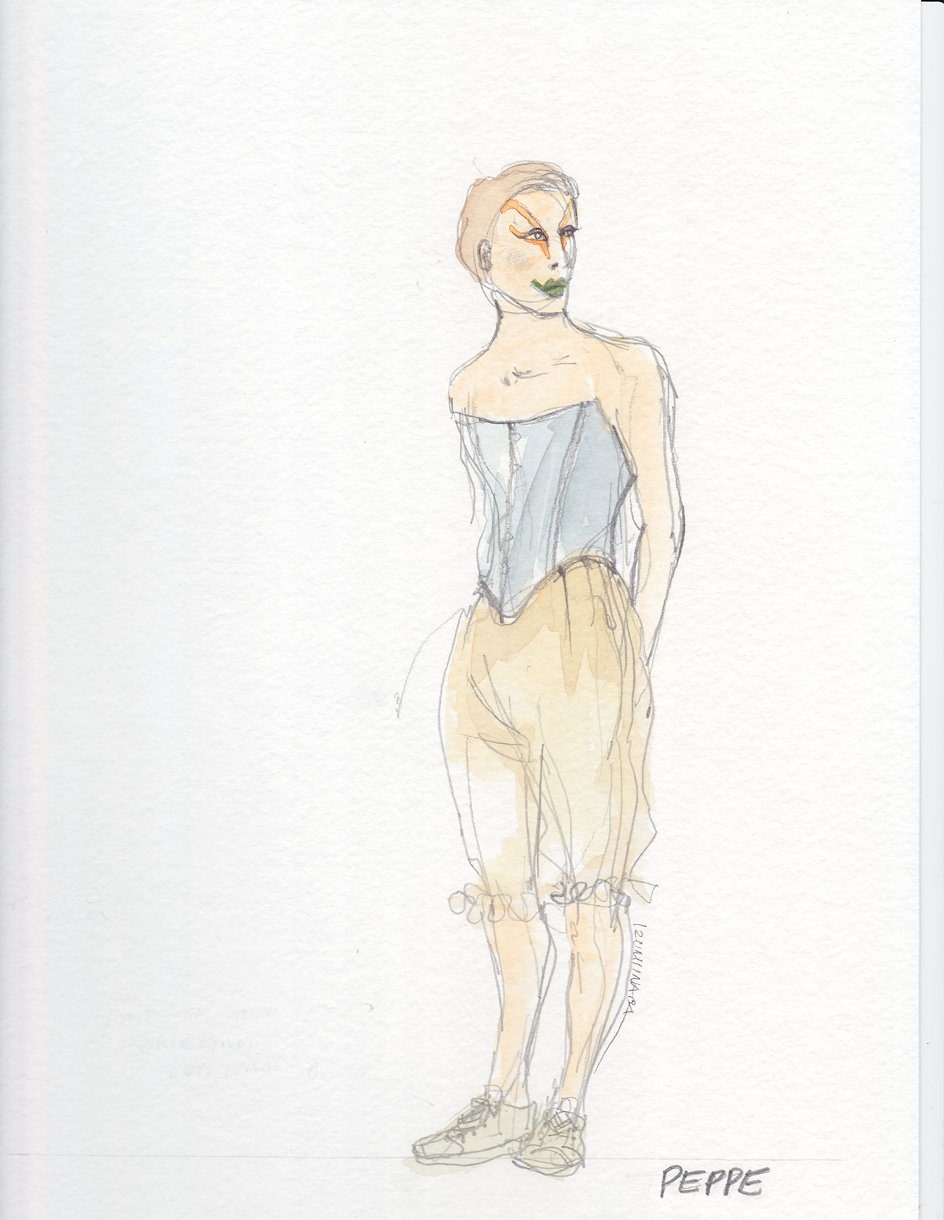
Peppe | Frame 2

Tonio | Frame 2
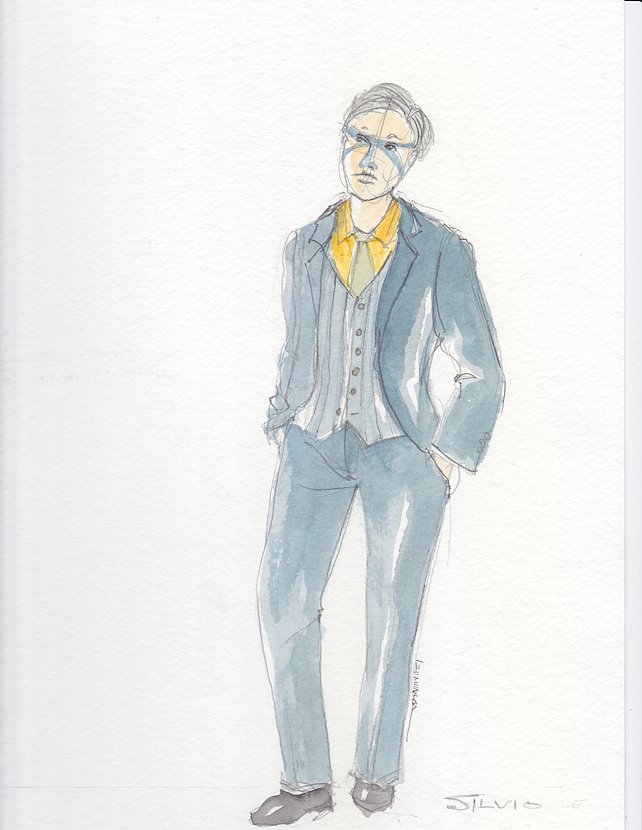
Silvio | Frame 2
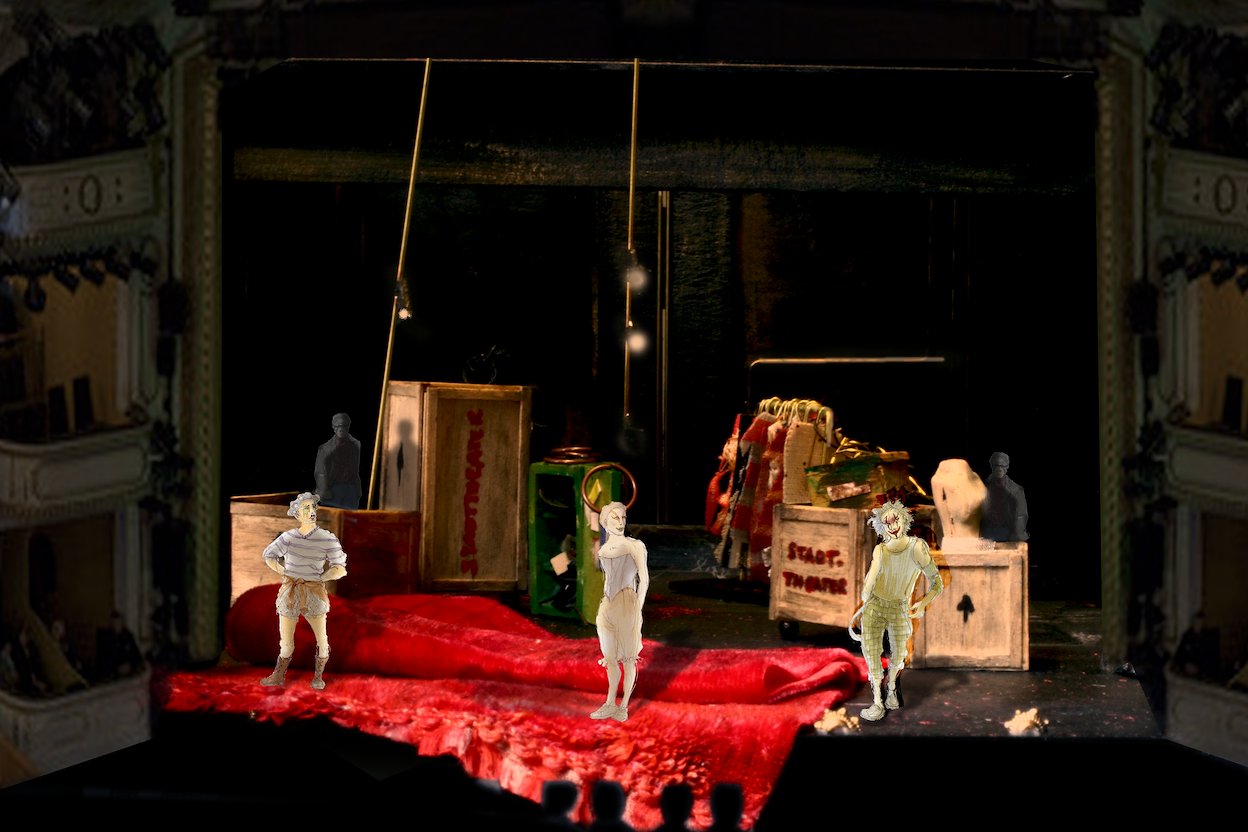
The Dressing Room (Frame 2): Canio tells Peppe and Tonio that although he is a clown on stage, in real life he would never be made a fool. Nedda, inspired by the free birds in sky, dreams of escaping the life of a performer.
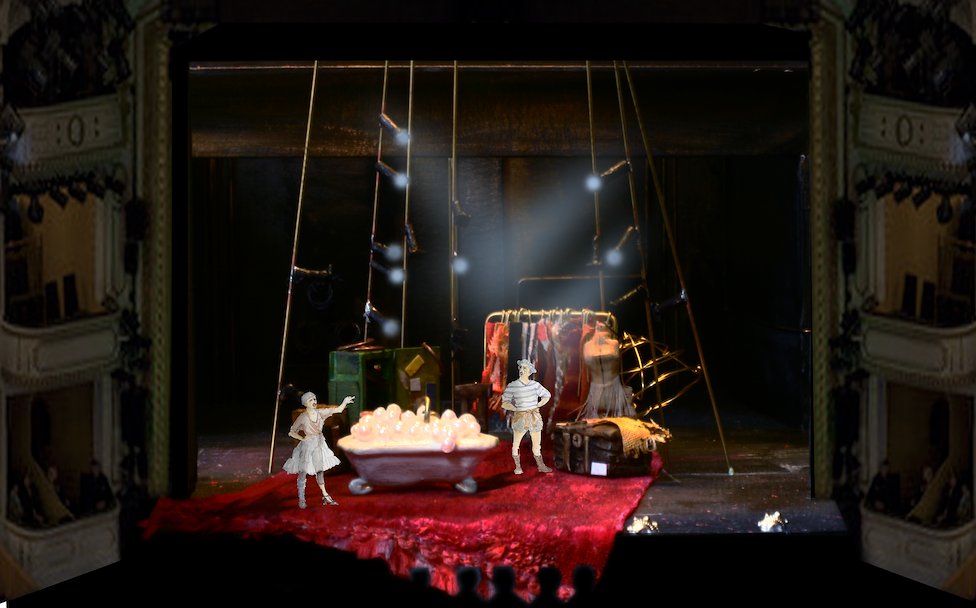
Nedda and Tonio (Frame 2): Tonio returns to seduce Nedda, but is rejected, after which she promises to escape with Silvio. When Canio returns to catch Silvio, he escapes through a trap door under the main curtain.

"Vesti la giubba" (Frame 2): During the arias and duets, the Actors change into the costumes for the Characters they are to perform in CAVALLERIA. As a result, there are moments when the erotic tension between Nedda and Tonio (and later Nedda and Silvio) is highlighted in the Actors’ half-clothed state. During “Vesti la giubba”, Canio is the last to change into costume, as the dressing room properties sink into the stage floor and all the battens fly out except one. The loneliness of the performer is shown through Canio singing in isolation, illuminated by a single light, followed by a black-out and the intermission.

Turridu (Canio) | Frame 3
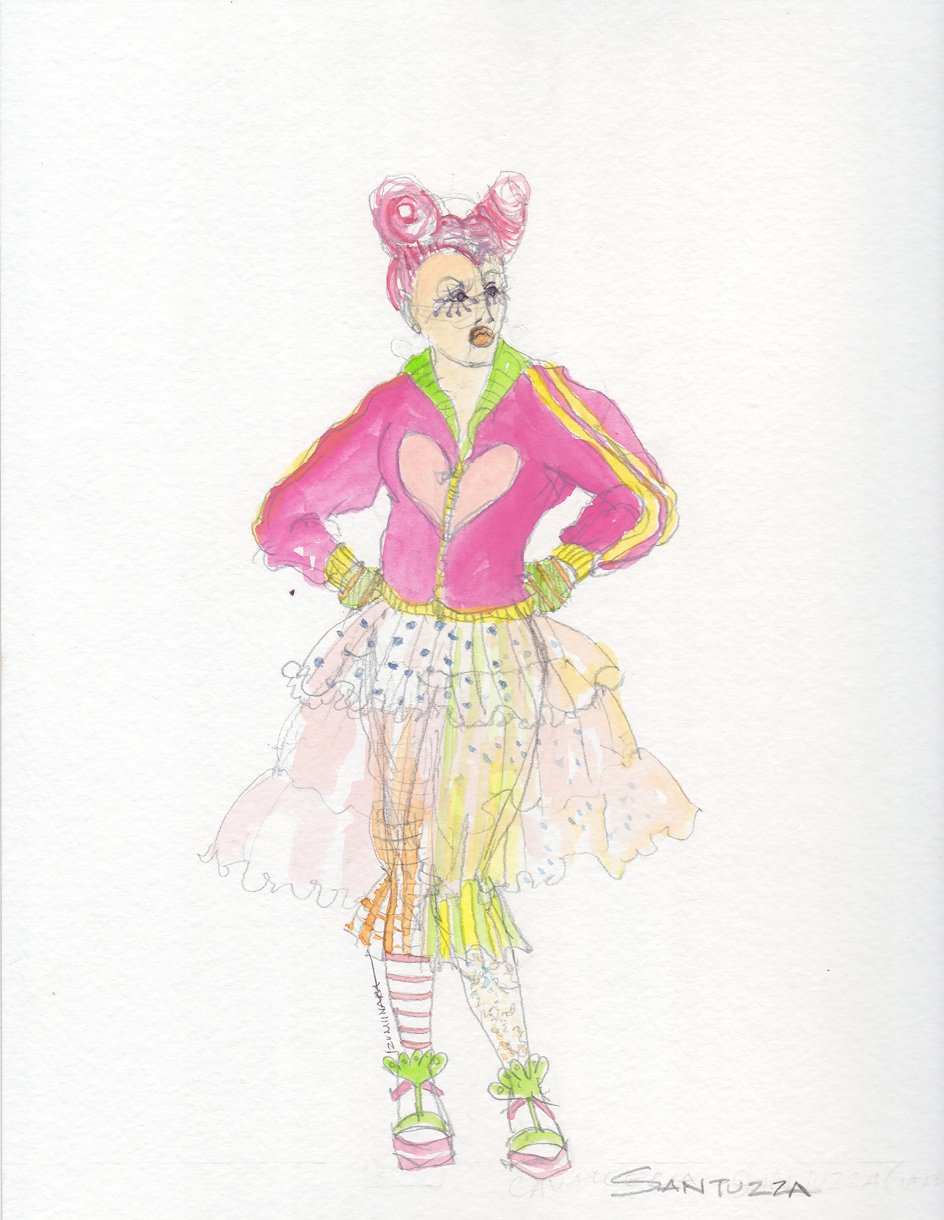
Santuzza (Nedda) | Frame 3

Lola (Peppe) | Frame 3

Lucia (Peppe) | Frame 3

Alfio (Tonio) | Frame 3
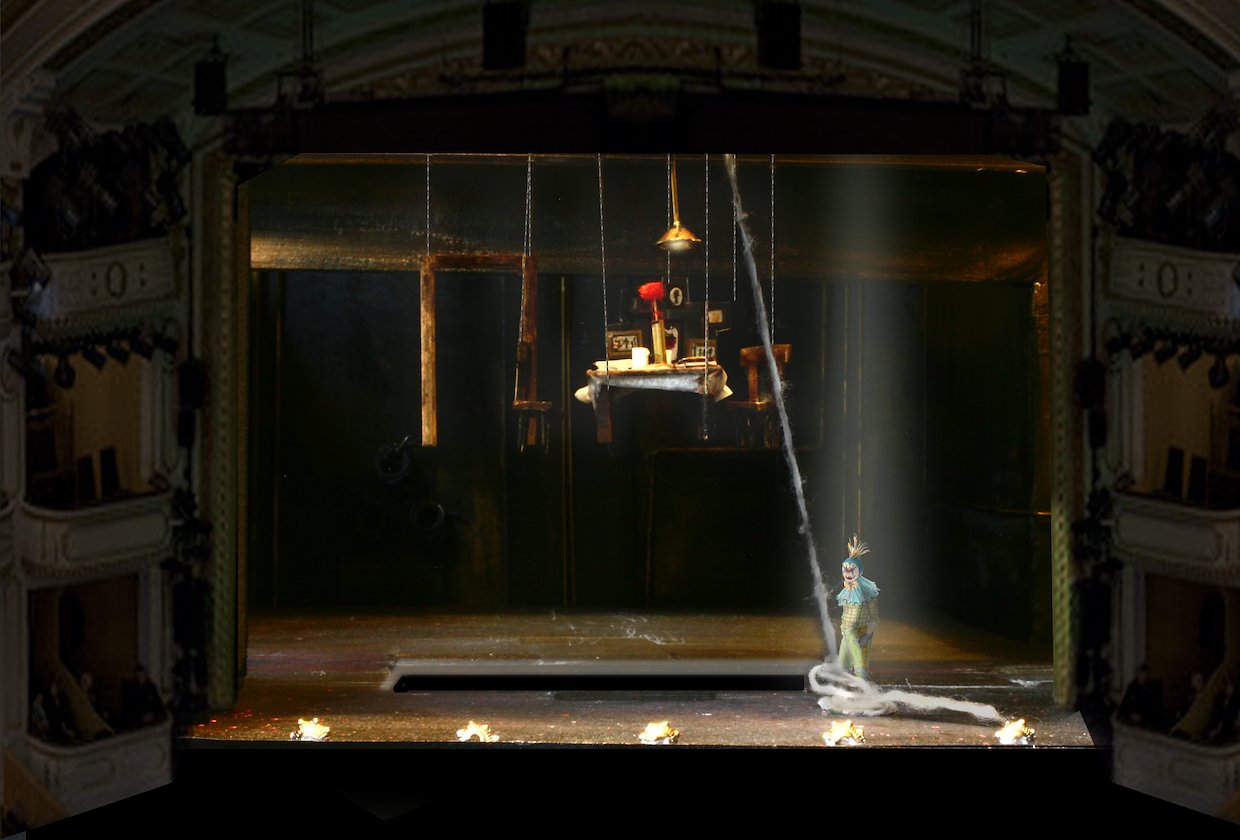
Prelude to CAVALLERIA (Frame 3): During the Prelude, Turridu (played by Canio), hoists the set for the Commedia play from PAGLIACCI through the open stage and into the fly tower. The bottom of this set remains visible, reminding the audience that the travelling troupe of clowns is performing two operas, and that PAGLIACCI will follow CAVALLERIA. Turridu continues to sing the Siciliana, tangled in the ropes he used to lift the set.
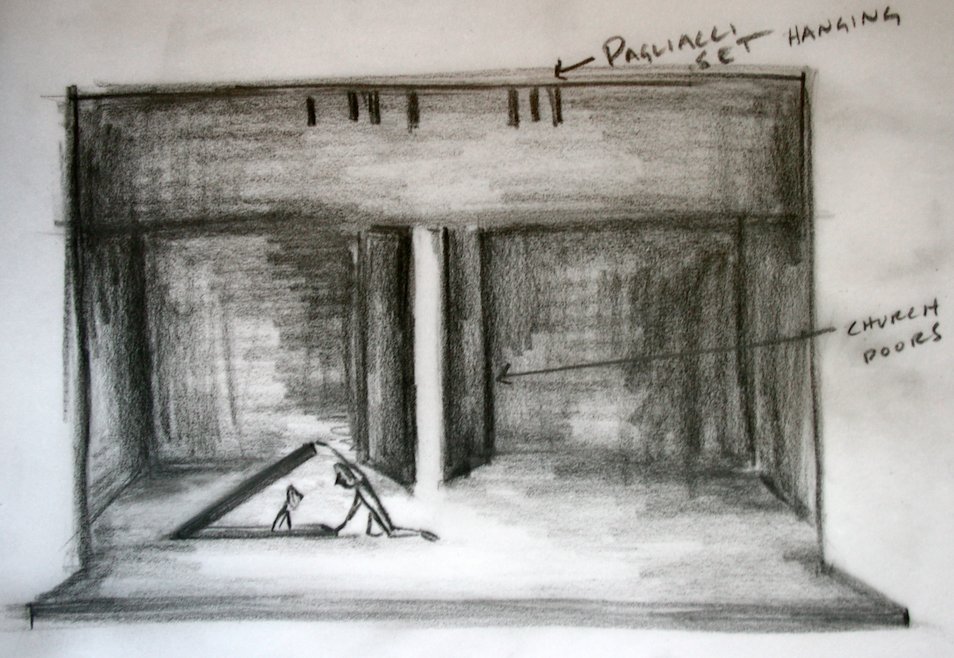
Santuzza and Lucia (Frame 3): CAVALLERIA is performed by the travelling troupe of clowns. Their goal is to make the piece genuinely amusing for the audience. As with any comedy, it is played absolutely seriously. The characters’ failure to achieve their objectives successfully makes the piece funny. The many trap doors in the theater floor allow the Characters to enter and exit in surprising and unusual ways. In this sketch, Santuzza opens a trap door to find Lucia hiding below, refusing to help Santuzza find Turridu.
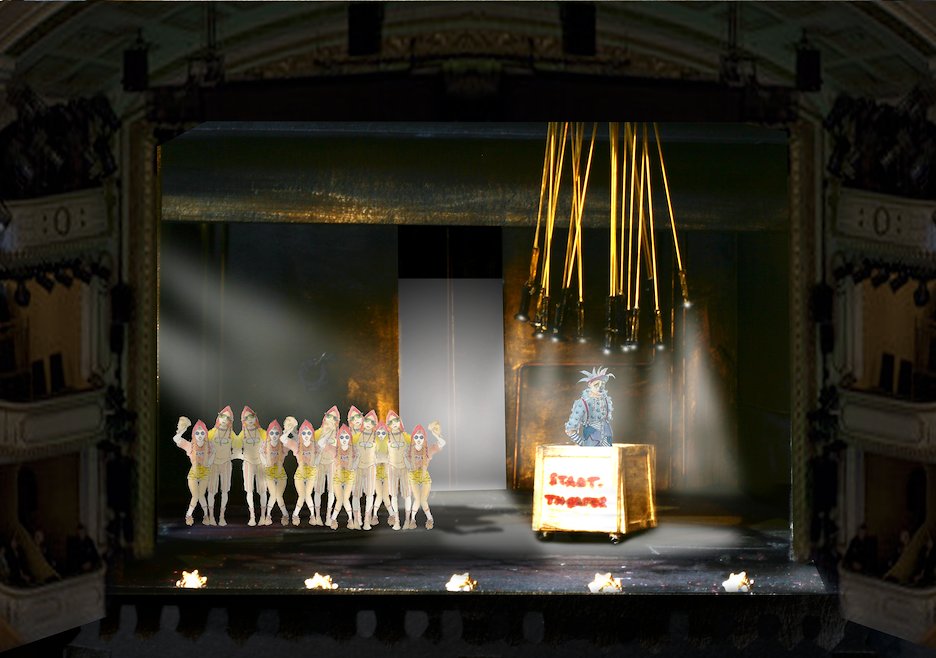
The Chorus Enters (Frame 3): Alfio enters through the stage floor with a large road box. After his aria “Il cavallo scalpita”, the chorus, dressed as clowns, enter one by one from the box. The effect is similar to that of a clown car in a circus. They sing “Regina coeli laetare” and exit into the church through the large loading doors at upstage center.
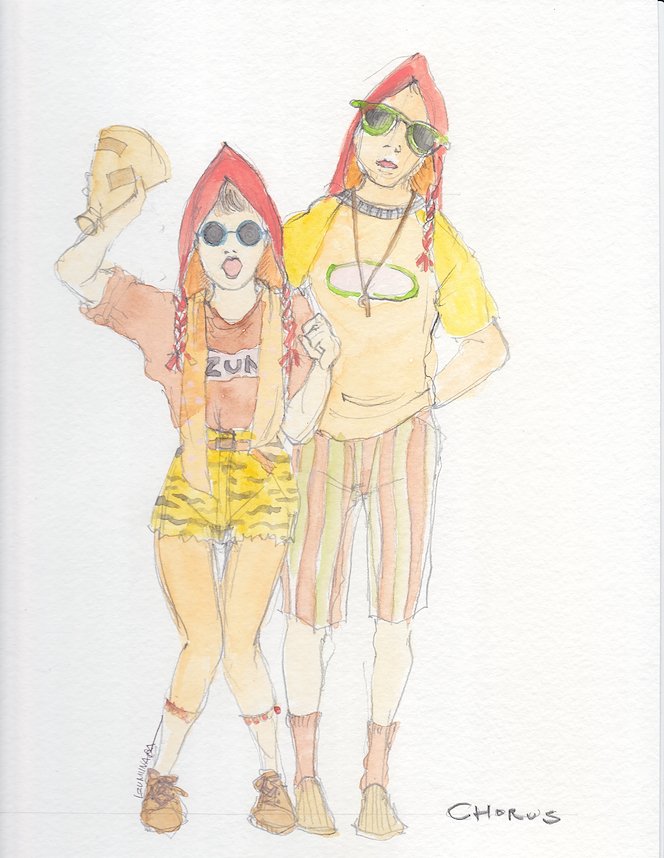
Chorus | Frame 3
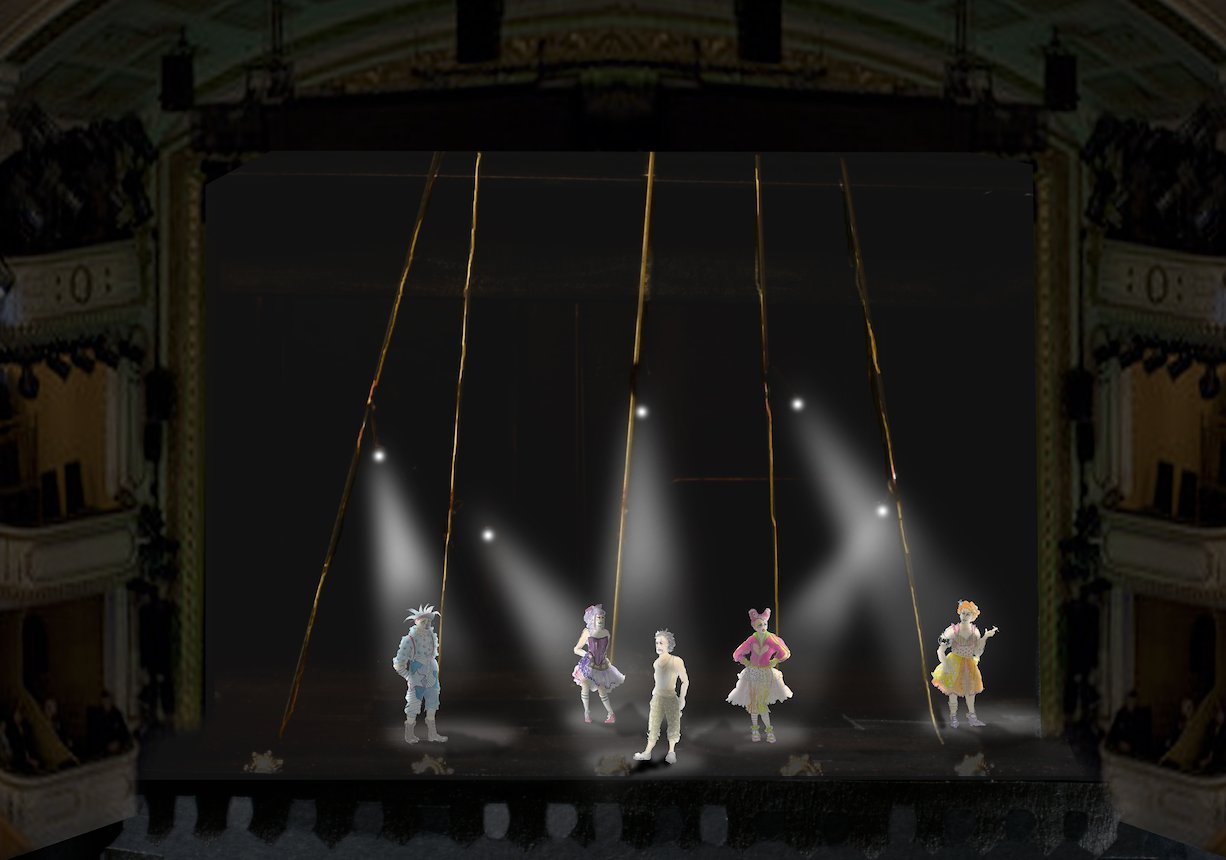
Intermezzo of CAVALLERIA (Frame 2): The battens from Frame 2 fly in, creating a space reminiscent of the dressing room. During the music, we see the Actors relaxing (smoking, eating, drinking) as if it was the intermission of their performance. At the end, all of the battens but one fly out and the floor drops away, leaving a pit. As with “Vesti la giubba”, Canio is left behind. He drinks alone, singing the Brindisi to himself in the dressing room.

Alfio and Turridu (Frame 3): After the drinking song, Alfio confronts Turridu. Turridu accepts the challenge, says farewell to his mother Lucia and is killed when Alfio pushes him into the pit left at the end of the Intermezzo.

Transition into PAGLIACCI (Frame 2): During the Intermezzo, the stage floor rises up, carrying Canio, half-dressed with his make-up smeared with tears. He pulls hard on the rope and the set for the Commedia play drops violently onto the stage floor. The chains that lifted the set into the air remain visible.
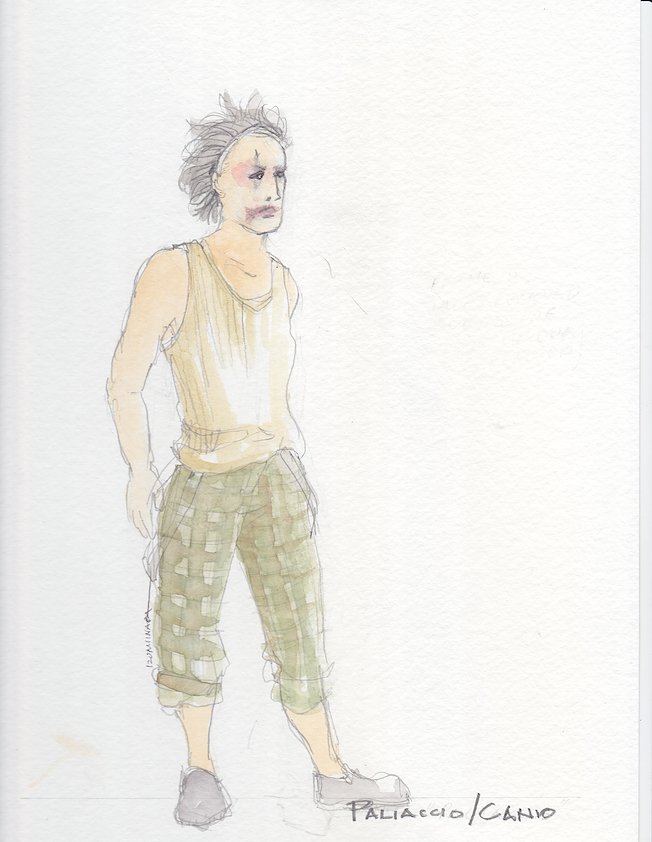
Pagliaccio (Canio) | Frame 3
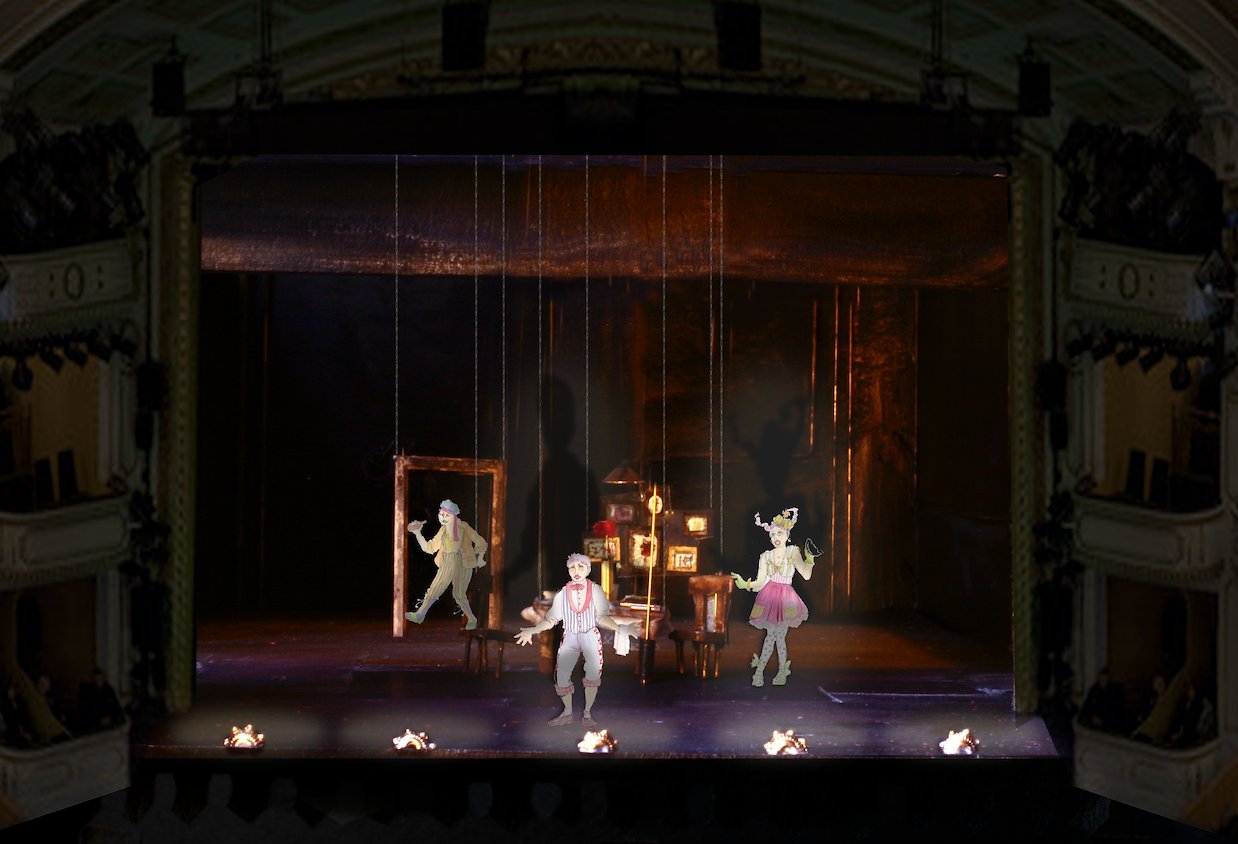
Commedia Performance (Frame 3): The Actors have changed into new Character costumes. The three play the Commedia piece, during which Canio enters and confronts Nedda and Silvio, killing them.

Columbina (Nedda) | Frame 3
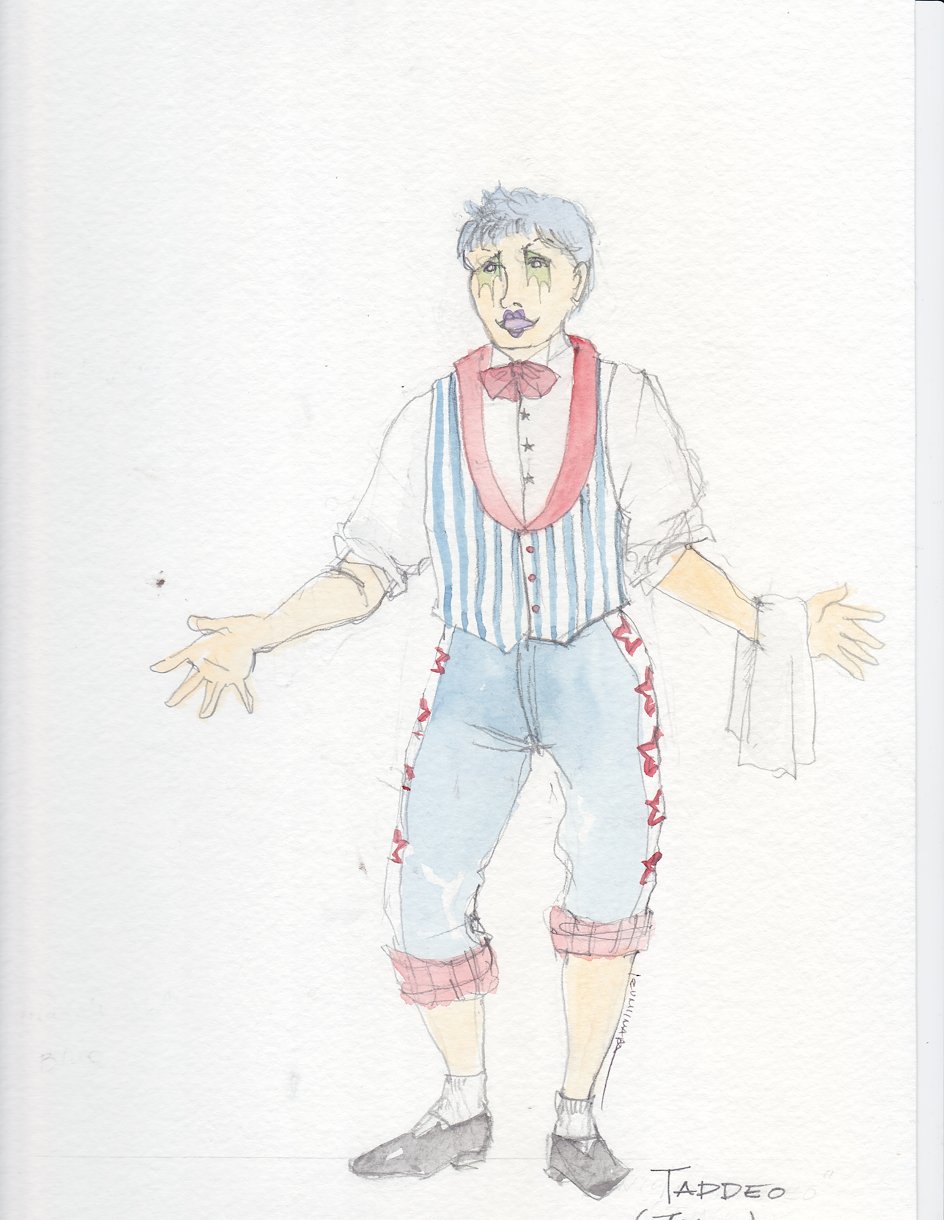
Taddeo (Tonio) | Frame 3
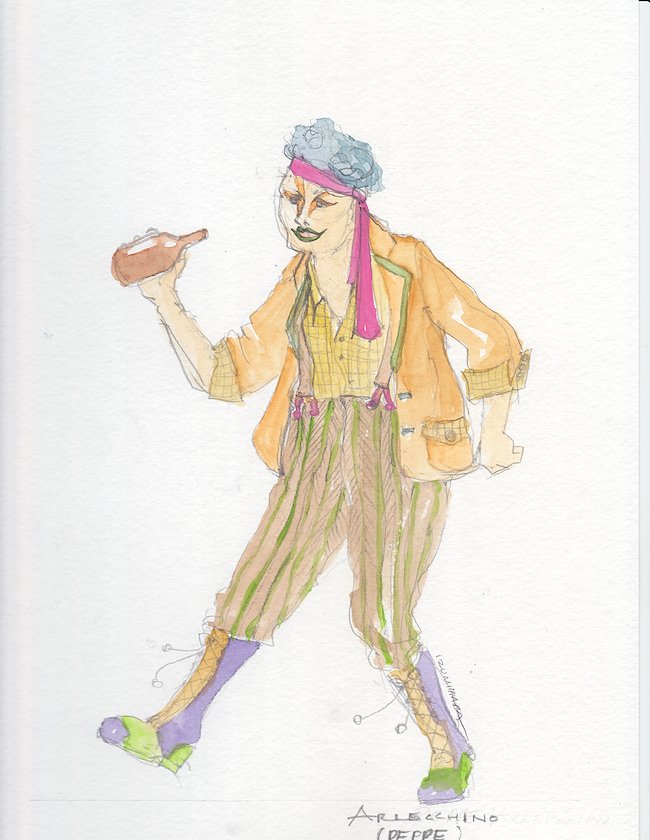
Arlecchino (Beppe) | Frame 3
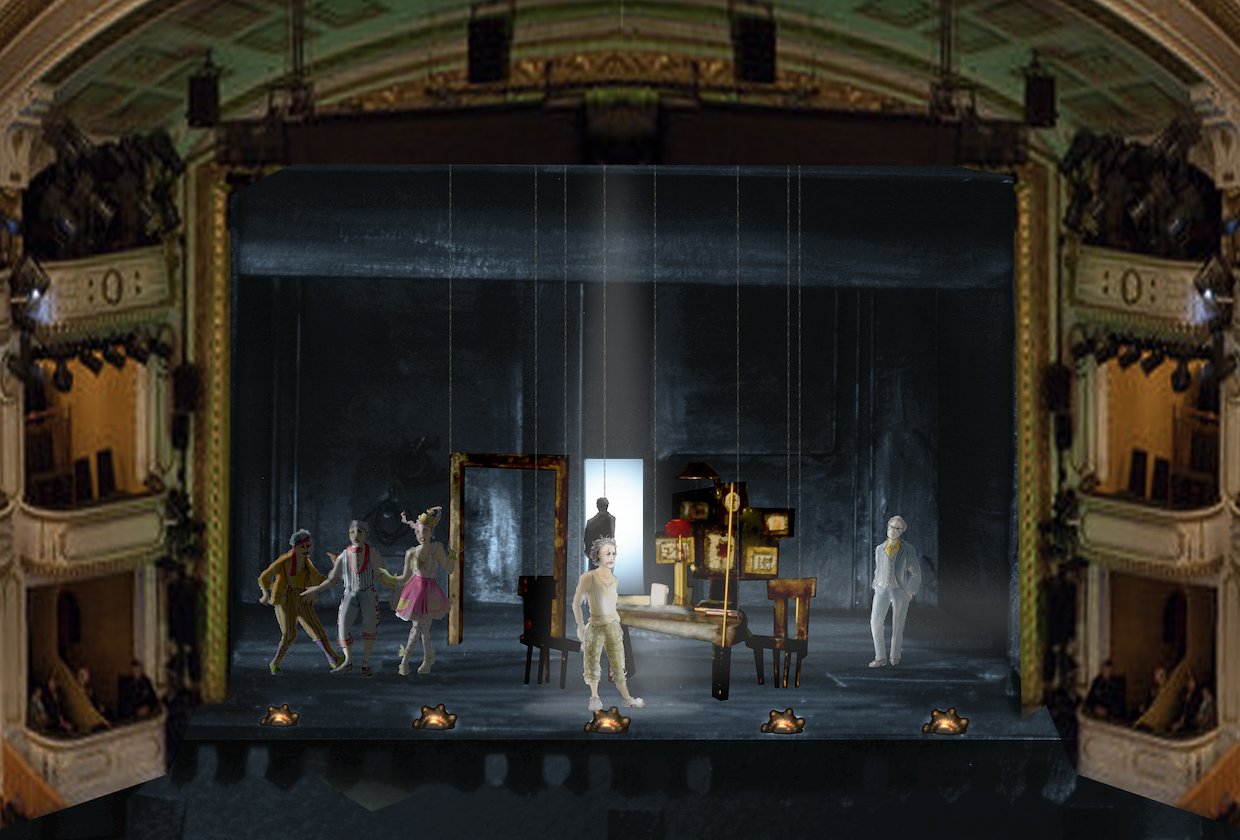
Final Image: Canio shouts “La commedia è finito!”, and the Chorus enters the stage from all points: through the upstage door, from the wings, and through the trap doors. As with the Prologue in Frame 1, the Chorus wear street clothes and stage make-up. The production’s three frames collide: The Chorus in Frame 1, Canio in Frame 2 and the Commedia Characters of Frame 3. The line between performer and clown has become blurred beyond recognition.